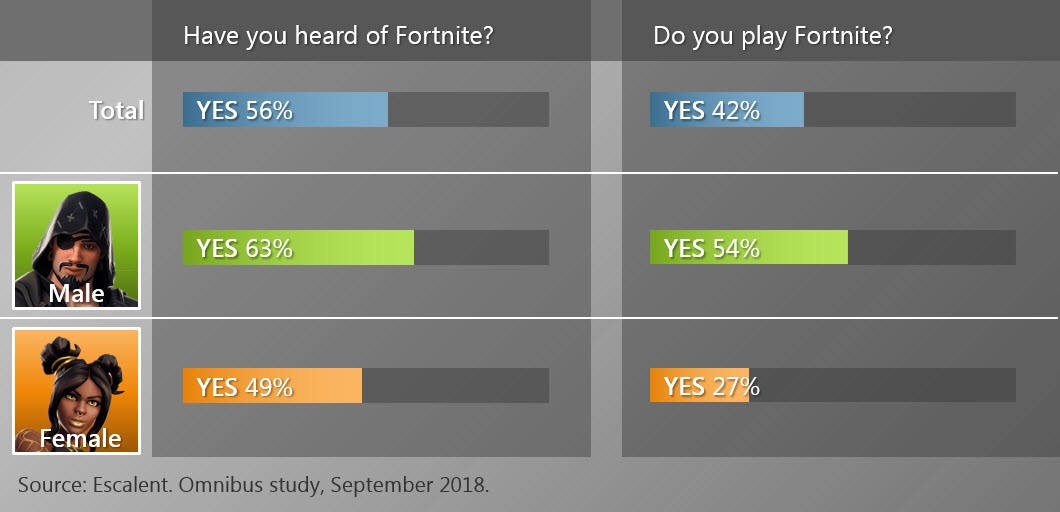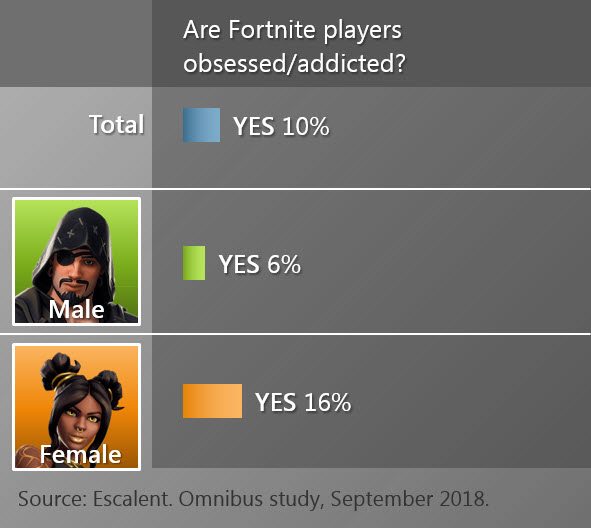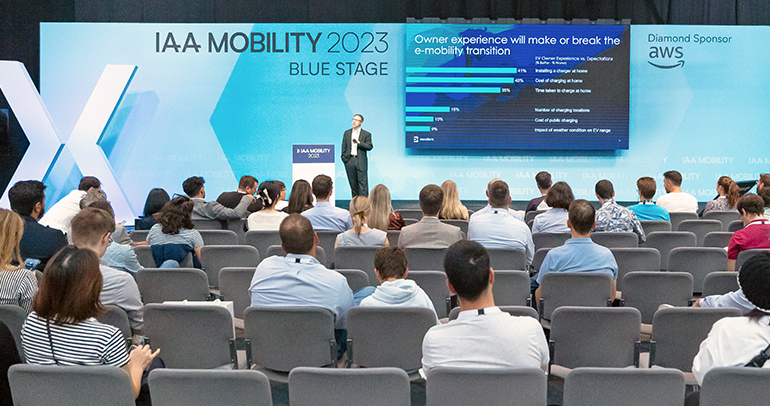
I live in a Fortnite house. My ten-year-old son discovered the game soon after its launch and has played it regularly on Xbox and mobile with his friends since last spring. On many mornings I have had to physically separate him from the controller (and his online friend crew) and usher him off to school. On countless evenings I have prepared chicken dinner while surrounded by the sounds of him battling and building his way toward “Battle Royale” wins. The Duo and Squad battles are the loudest, with my son and his friends shrieking in excitement with every giant sniper tower constructed and every enemy vanquished. Oh, and I mustn’t fail to mention the player dances—“emotes” that a player’s avatar can perform on-screen during a battle, not seemingly adding to a player’s ability to win but adding notably to the game’s fun factor. If you were anywhere in public in 2018, you likely saw kids and young adults breaking out into one of these dance moves—among them Take the L, Make It Rain, and my kids’ favorite, Floss.
How Fortnite Is Changing the World of Gaming
Fortnite is not just a game; it’s a social phenomenon connecting its players via the game play itself, the emotes, the live chatting, and the ability to play via various gaming platforms, both console and mobile. If you have any kind of gaming console, computer or mobile device (and your partner or mom gives you the A-OK to play), you can play and be a part of a huge global community.
Fortnite is setting records for game play and streaming media coverage, both in the eSports sector (competitive multiplayer video games) and overall in global media. Mid-last year, superstar streaming player Tyler “Ninja” Blevins set the Twitch streaming record during a match with rapper Drake, drawing 630,000 concurrent viewers (nearly double the prior record). He also had the most online media interactions of any “sports” star in April 2018, logging more online interactions than Shaq and Neymar. His Fortnite-propelled fame has reached such heights that in September, he was the first e-Sports player featured on the cover of ESPN magazine.
But Fortnite is also making a splash in the news for negative reasons. Last fall Fortnite was mentioned by Divorce Online (UK) for being cited in 200+ divorce petitions filed on the divorce website since January 2018, which amounted to about 5% of divorce petitions received during that period. Pushback followed, with competing news sources writing to debunk the claim that Fortnite was the actual cause of divorces—focusing instead on issues with digital addiction broadly but acknowledging that mention of hot game Fortnite likely led to increased story buzz.
“Further parts of the release make clear that the numbers…are actually about digital addictions. ‘These now include online pornography, online gaming and social media, so it is no surprise to us that more and more people are having relationship problems because of our digital addictions,’ (according to) a spokesperson. A note at the top of Divorce Online’s story gives a clue about why Fortnite was so prominent in the release, and why it received such widespread coverage. ‘Fortnite is all over the news right now as one of the most addictive digital games ever played,’ it wrote at the top, and that newsworthiness is presumably why the story has gained such attention.” (Fortnite isn’t actually responsible for 200 divorces this year. Independent, September 2018)
Exploring Different Perspectives
The technology market research team at Escalent has been following the breakaway success of Fortnite, and we asked about the game in our recent consumer self-funded study. We were curious to see the prevalence of the game among various demographic groups, and how the game may be shifting the gaming sector itself. Of the 972 US consumers we surveyed, 56% have heard of Fortnite, and of those, 42% have played it. When looking at the data, we see a clear gender skew, with 54% of men more likely to play vs. 27% women; many of the women are exposed to the game via their children or significant other playing (23% and 18%, respectively).

What surprised us was the difference in how men and women see the game as changing the gaming sector (about one in two acknowledges that Fortnite has done so in some way). Men are likely to cite positive changes—things like broadening of the gaming community, creating a new “battle royale” game movement, allowing a multiplayer game to be played across households and platforms, and generally upping the quality of games overall. In contrast, women are more likely to cite negative changes, most notably that users “are addicted/obsessed” (16% cite this change). It’s clear that Fortnite is causing some friction in American households and relationships, with women raising the red flag, who are more likely to see Fortnite play bordering on obsession and digital addiction (possibly exhibited by their child or partner).

While it’s not likely that Fortnite is the root cause of a rash of recent divorces or a life-threatening addiction, it is a very time-intensive activity that is viewed quite differently by different demographic groups.
I had an opportunity to talk with my son and a few of his male and female friends recently about Fortnite: why they play, what—if anything—makes the game stand out, and whether they see it as potentially problematic or even addictive. The kids were quick to share positive attributes—the innovative battle royale format, the ability to connect with friends online and across different consoles and platforms, the “fun” introduced by the emotes and in-game chatting. One friend talked about how the emotes allowed some of the game culture to jump off the screen and enter real life, resulting in friends and strangers moving, dancing and laughing together in shared physical space—something that seems to elevate Fortnite from a mere game to more of a social phenomenon, its players now a part of a larger gaming tribe. What these boys and girls didn’t talk about was a game so addictive that its charms were irresistible. They report being able to take breaks from the game, and in fact even seek out intermittent breaks that help keep the game fresh over time. They also note that the game’s “seasons”—each of which lasts several months and includes unique game maps, character skins and other features—can help break a play habit: some of these young players choose to sit out one season to create some distance from the game, play other titles, and then return to the game a season or two later.
The Future of Fortnite
In this era of eSports and platform-agnostic multiplayer games, Fortnite is certain to be followed by a new game that may well send non-players into a frenzy about the time-wasting and potentially isolating nature of video gaming. When some hot new game does take Fortnite’s place in 2019, I suspect it will share some of the same attributes that made Fortnite a runaway hit, most notably the access to game play across platforms and the social aspects like emotes and in-game chatting. Both at my house and here at Escalent, we’ll continue to keep an eye out for interesting entrants in the space, and report on any new potentially addictive games, gaming/eSports formats, and innovative gaming features that break through the clutter.







